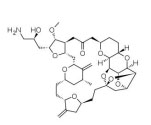Neocuproine is a versatile chemical compound that has various applications in different fields. It is a chelating agent that forms stable complexes with metal ions, particularly copper(II) ions. Its unique properties make it useful in several areas, such as analytical chemistry, biochemistry, and material science. In this article, we will explore some of the applications of neocuproine.

1. Analytical Chemistry: Neocuproine is commonly used as a reagent for the determination of copper ions in solution. It forms a highly stable complex with copper(II) ions, which can be quantitatively measured using spectrophotometric or electrochemical methods. This makes neocuproine a valuable tool for the analysis of copper in various samples, including environmental samples, biological fluids, and industrial waste.
2. Biological Research: Neocuproine is widely used in the study of copper homeostasis and copper-related biological processes. It can be employed to chelate copper ions and inhibit their interaction with biomolecules, such as proteins and enzymes. This allows researchers to investigate the role of copper in biological systems and explore its impact on cellular processes and diseases. Neocuproine is also used as a fluorescent probe for the detection and imaging of copper ions in living cells.

3. Material Science: Neocuproine has been utilized in the synthesis and characterization of various metal-organic frameworks (MOFs) and coordination polymers. It acts as a ligand, coordinating with metal ions to form stable complexes. These complexes can self-assemble into porous materials with unique structures and properties. Neocuproine-based MOFs have shown potential applications in gas storage, catalysis, and drug delivery systems.
4. Organic Synthesis: Neocuproine can serve as a catalyst or ligand in organic synthesis reactions. It has been used in various transformations, such as C-C and C-N bond formation, oxidation, and reduction reactions. Neocuproine complexes can enhance reaction rates and selectivity, making it a valuable tool in synthetic chemistry.
5. Photovoltaics: Neocuproine derivatives have shown promise in the field of organic solar cells. They can be incorporated into the active layer of solar cells to improve their efficiency and stability. Neocuproine-based materials have been explored as electron-transporting layers and hole-blocking layers in photovoltaic devices.
In conclusion, neocuproine is a versatile compound with diverse applications in analytical chemistry, biochemistry, material science, organic synthesis, and photovoltaics. Its ability to form stable complexes with metal ions, particularly copper(II) ions, makes it a valuable tool in various research areas. The continued exploration and development of neocuproine and its derivatives may lead to further advancements in these fields.

Post time: Sep-28-2023

